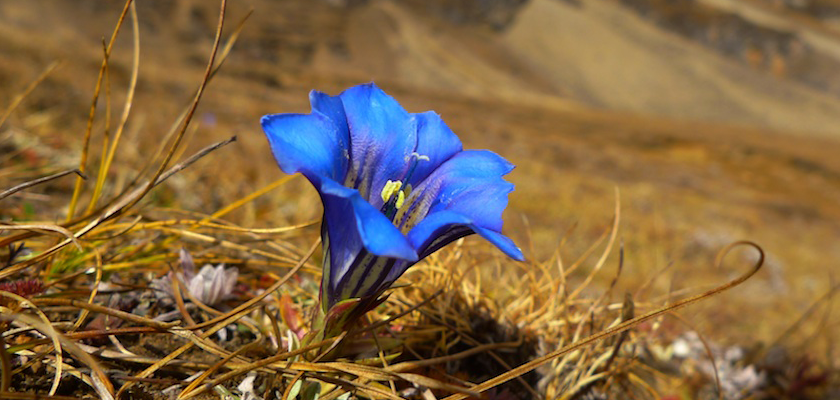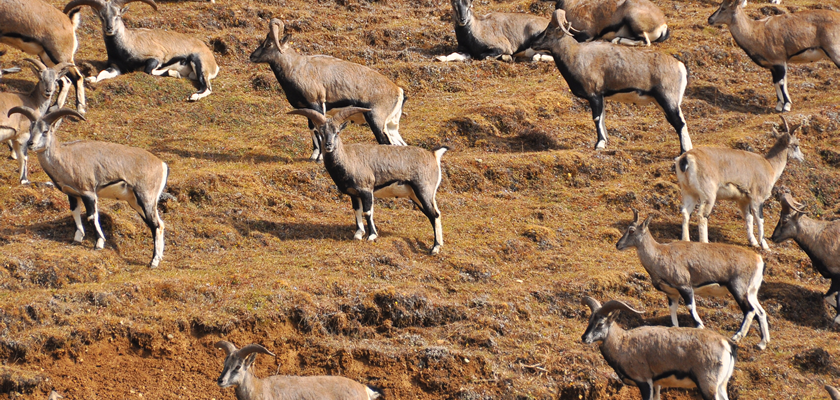" Take nothing but memories, leave nothing but foot prints "
- The Himalayan Kingdom of BHUTAN -Flora
 Bhutanese forests are divided into the alpine zone (4000m /13125 ft and above) where there is no forest cover, the temperate zone falling between 2000m to 4000m / 6561ft to 13125 ft with conifer/ broad leaf forests, and the sub tropical zone with tropical/sub tropical vegetation from an elevation of 1500m to 2000m / 4921ft to 6561 ft. Forest types include Fir forests, mixed conifer forest blue pine, Chirpine forest, and broad leaf mixed with conifer, upland hardwood forest, lowland hardwood and tropical lowland forests. Three ecological units may be distinguished within Bhutan: High altitude, temperate, and tropical. More than 60 percent of the endemic plant species of the eastern Himalayas can be found within Bhutan. Of the 5500 known species of vascular plants, 50 or more are endemic to Bhutan itself. Although a comprehensive description of Bhutanese flora is yet to be formulated, it is accepted that several species are highly valuable for their conservation properties. These include some forAlkaloids and gene pools for crop research, and those that are potential horticultural crops.
Bhutanese forests are divided into the alpine zone (4000m /13125 ft and above) where there is no forest cover, the temperate zone falling between 2000m to 4000m / 6561ft to 13125 ft with conifer/ broad leaf forests, and the sub tropical zone with tropical/sub tropical vegetation from an elevation of 1500m to 2000m / 4921ft to 6561 ft. Forest types include Fir forests, mixed conifer forest blue pine, Chirpine forest, and broad leaf mixed with conifer, upland hardwood forest, lowland hardwood and tropical lowland forests. Three ecological units may be distinguished within Bhutan: High altitude, temperate, and tropical. More than 60 percent of the endemic plant species of the eastern Himalayas can be found within Bhutan. Of the 5500 known species of vascular plants, 50 or more are endemic to Bhutan itself. Although a comprehensive description of Bhutanese flora is yet to be formulated, it is accepted that several species are highly valuable for their conservation properties. These include some forAlkaloids and gene pools for crop research, and those that are potential horticultural crops.
Fauna
770 bird species in Bhutan have been recorded and much still remain unknown. Indo Malayan and pale arctic elements are among those that have been recorded. Approximately 73 percent are resident. Snow leopard, blue sheep, red panda, tiger, takin, marmot and musk deer are some of the species found in the high altitude. Temperate zone fauna include Tiger, leopard, goral, gray langur, Himalayan black beer, red panda, sambar, wild pig, and barking deer. The tropical forests in the south have tiger, clouded leopard, elephants, one horned Rhinoceros, water buffalo, golden langur, gaur, swamp deer, hog deer horn bills etc.
